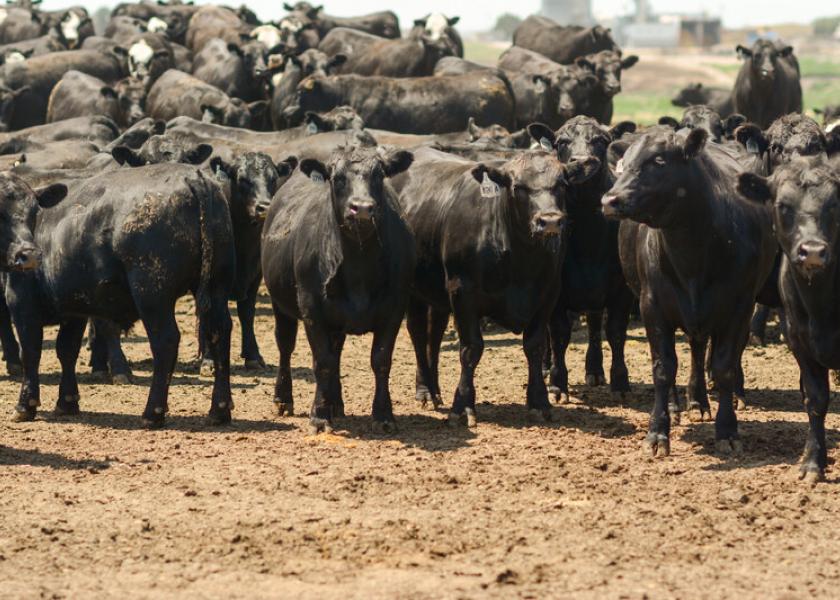New Warning Signs For Fed Cattle Market

Steadily increasing cattle harvest data is good news for cattle feeders, but the backlog of market-ready cattle created by COVID-19 will impact markets the rest of 2020.
Indeed, this first full-week following the Memorial Day holiday delivers signals cattle markets may see a second wave of downward pressure, the after-shocks of the COVID-19 earthquake.
Wednesday’s (June 3, 2020) online Fed Cattle Exchange sold only one pen of cattle at $110.50 per cwt. Later trading on Wednesday was at $117 live and $175 to $187 dressed. Packers have lowered cash bids.
Benevolent packer attitudes of recent weeks have shifted dramatically as wholesale beef prices declined as rapidly as they increased. Wednesday morning’s (June 3) Choice boxed beef cutout sat at $300.01, an $18.72 per cwt. decline from the previous day’s close. That’s an amazing $100.55 per cwt. decline in less than two weeks (-25%), and a strong indication that retailers are finding adequate supplies and packer margins are drifting back toward large rather than extra-large.
Another signal analysts have noted is that packers have significantly reduced the number of cattle they have contracted for delivery in the next few months.
Len Steiner, Steiner Consulting Group, says packers have reduced their number of forward contract cattle because they do not see much supply risk in the near future, yet they face “uncertain” demand.
“A number of factors have contributed to (the reduction in forward contracting),” Steiner says in the Daily Livestock Report. “A) demand is highly uncertain and forward beef sales are sharply lower than a year ago; B) front end cattle supplies are heavy; and C) slaughter capacity has increased but COVID-19 remains a major wildcard that could disrupt slaughter and especially line speeds.”
Steiner said that in 2014 when supply risk was high, a larger share of cattle were purchased on a forward contract basis. The latest data from USDA shows cattle forward contracted for delivery in July is currently 43% lower than a year ago, August was down 53%, September down 46% and October down 38%.
COVID-19 disruptions have also led to larger than expected slaughter weights and an increase in quality grades. Packers have actively sought the heavier cattle to send to processing, which was necessary to try and limit the backlog that was inevitably developing. However, those heavier cattle have produced carcass weights roughly 50 pounds heavier than the same time last year.
Along with the trend of heavier cattle, the percentage of cattle grading USDA Prime exceeded 12% for the week ending May 9, the first time ever in the dataset dating back to 1995. That same week the combined percentage of carcasses grading USDA Prime and Choice was 84%.
While slaughter levels may continue inching back toward pre-COVID-19 levels, wholesale beef prices will continue a rapid retreat. Growing supplies of pork and beef over the coming months will keep the pressure on wholesale prices.
Cassie Fish, author of The Beef Read, noted today the industry faces months of challenges ahead.
“Frankly, the industry has never backlogged this many cattle in history. When applying basic math of slaughter pace versus placements, even if slaughter averages over 660k from July through the end of the year, the backlog is staggering. Coupled with the huge beef production Q3 will produce, cash price pressure is likely for many months.”
Related stories:







